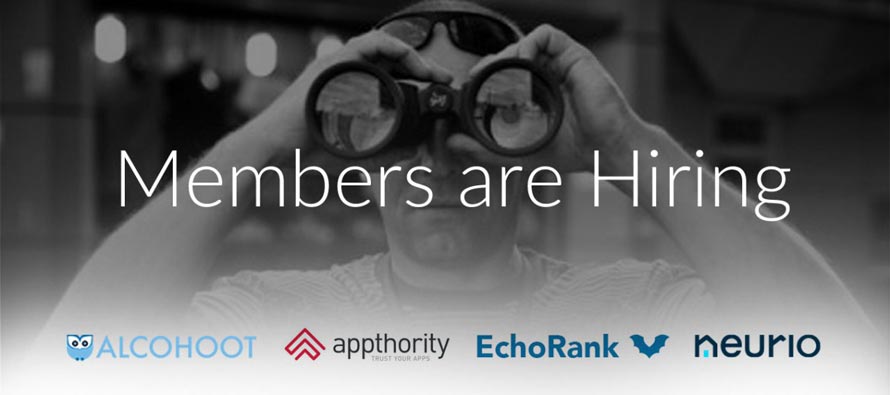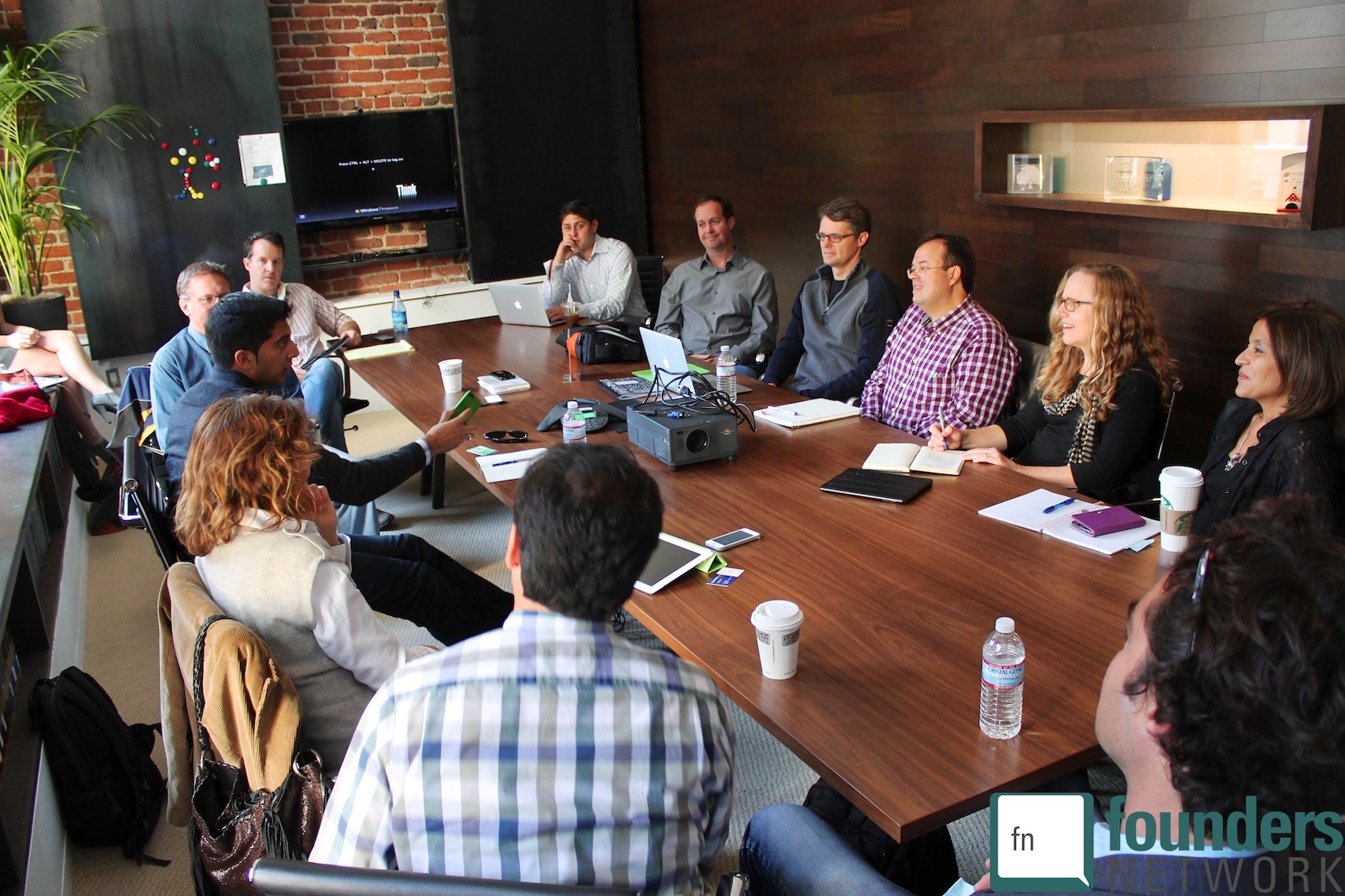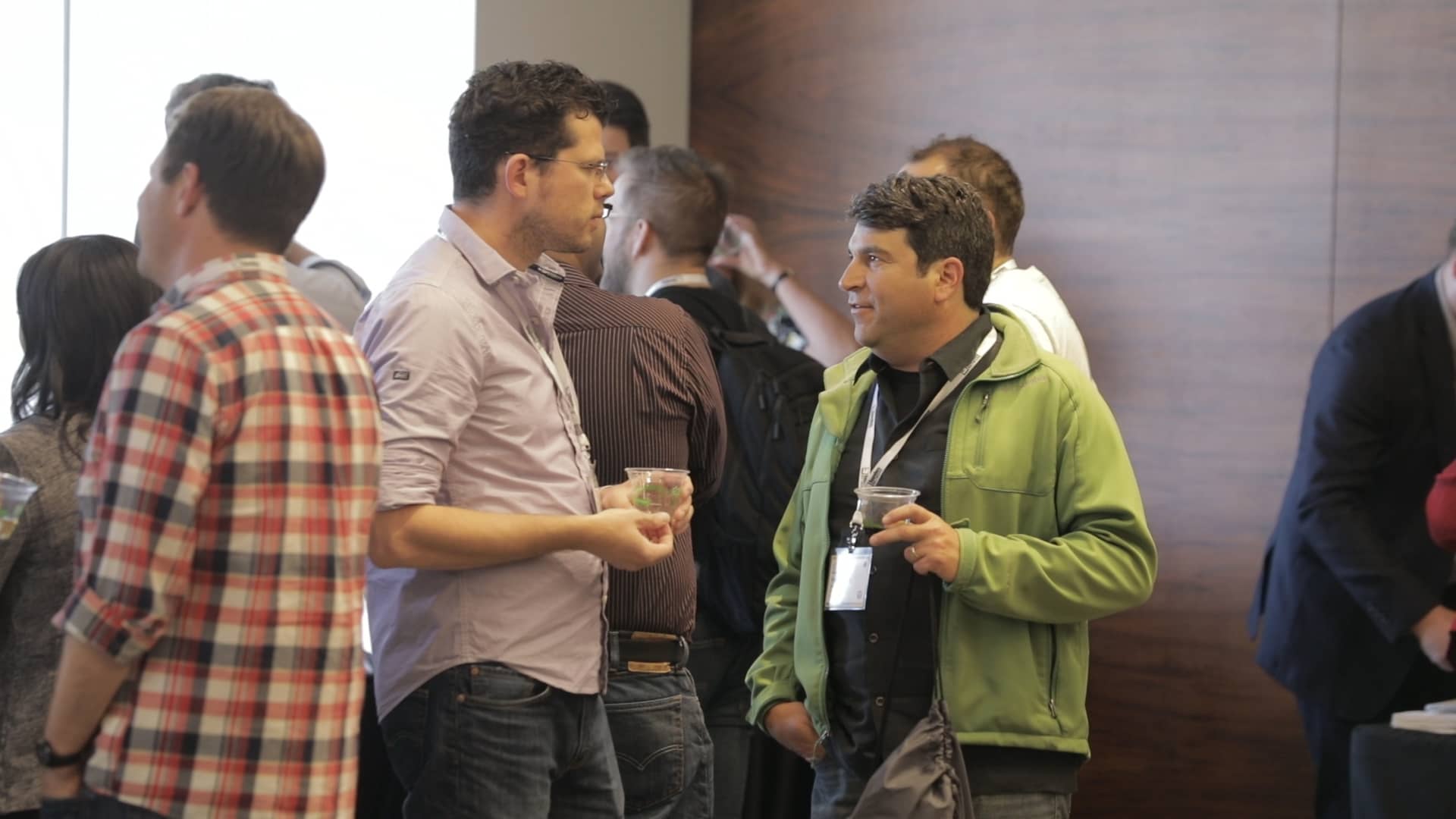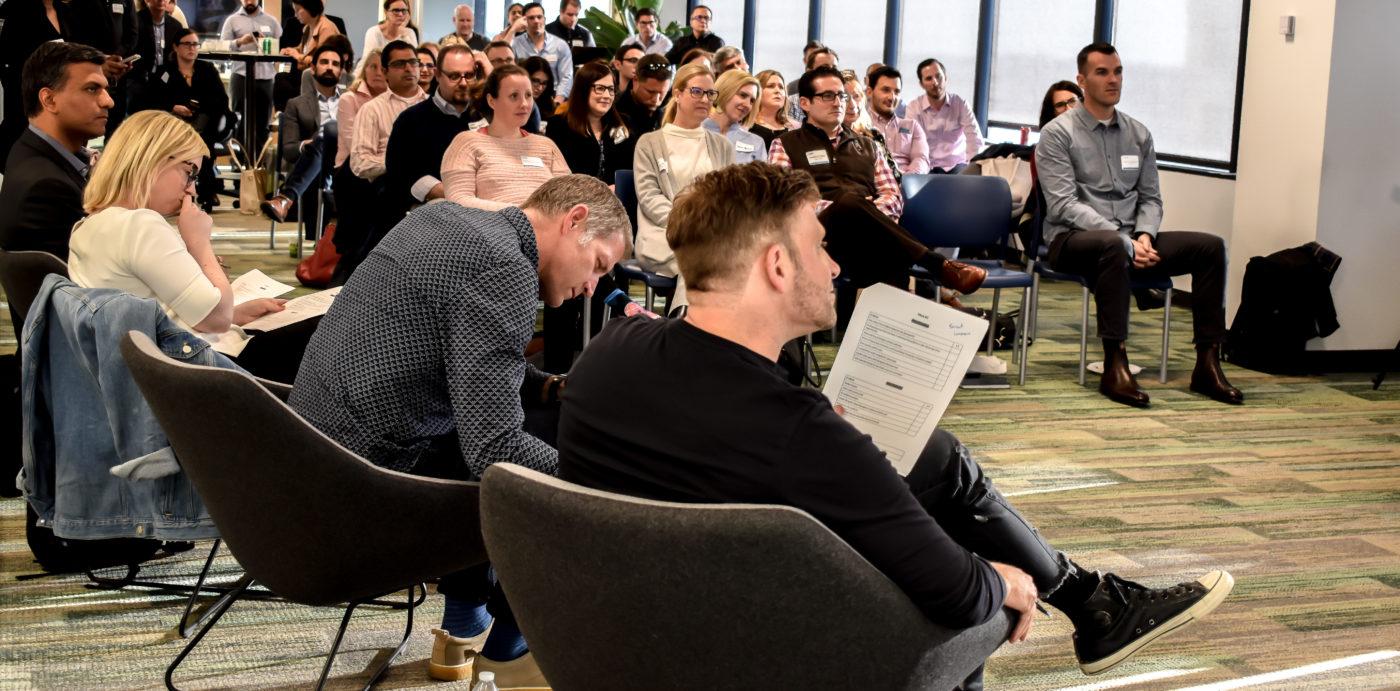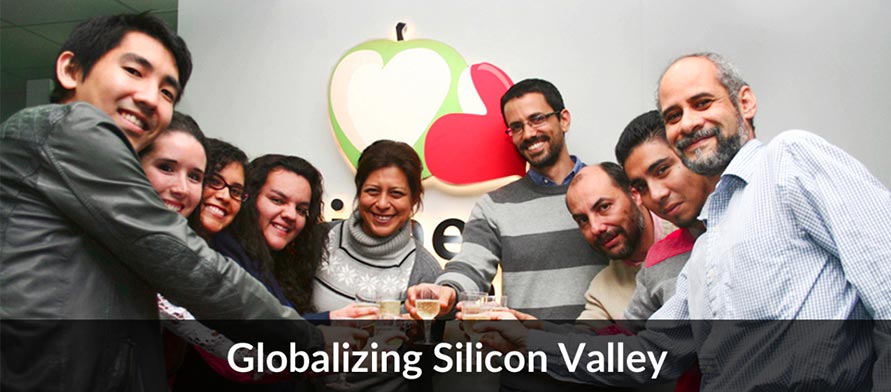
Founders Network draws entrepreneurs primarily from American tech hubs, building a cohort of startups in San Francisco, Silicon Valley and New York. But founder communities are seeing huge growth world-wide. How does the game change when you’re working from Helsinki, Prague, Lima, or Mexico City?
Startup CEOs from Europe and Latin America weighed in for an exclusive Founders Edge feature with 7 key pieces of advice on finding a founder peer group and using it strategically. Read on to learn how they:
- Find a founder peer group that crosses borders
- Start in Silicon Valley, but don’t end there
- Import tech culture, but apply it to their own
- Commute, but do it smarter (and often online)
- Look larger than their locale
- Leverage local resources
- Signal an international culture fit with more than metrics
Building a bridge to the Bay Area – its resources, but also its mentality – helps startups leverage geographic advantages (inexpensive rent and talent, limited competition) and work against disadvantages (immature capital markets and limited networking opportunities), according to Rafael Jimenez, the Mexico City-based founder of Seenapse.
He says that just hearing success stories from the U.S. has helped catalyze a local investment market still feeling burned from the dotcom crash and recession.
 “Since this ecosystem is fairly new, there haven’t been many exits (less than 5, maybe) and so experienced mentors and investors are quite rare,” Rafael says of Mexico City.
“Since this ecosystem is fairly new, there haven’t been many exits (less than 5, maybe) and so experienced mentors and investors are quite rare,” Rafael says of Mexico City.
“The Founders Network model is what’s needed here – we don’t have many people to follow, and could instead build a peer-to-peer network.”
FIND A FOUNDER PEER GROUP THAT CROSSES BORDERS
Ondrej Homola’s startup, Corinth, built a global publishing platform for education from their base in Prague. He sees government funding, European Union support and proliferating incubators in the Czech Republic providing more and more resources.
Like Rafael, he sees a problem of peer group – “The lack of CEO type founders with international experience, as well as ambitions,” Ondrej says.
“Life in Prague is awesome – great culture and food, Brno (the second biggest city in the Czech Republic after Prague) is getting quite hip with a great pool of developers. But sales and marketing is still not in our blood. At the end of the day we are still a small province – if you want to make global impact, you have to go to Silicon Valley.”
As Corinth’s CEO, Ondrej spends half his time in the Bay Area, forging connections and partnerships.
“That is crucial for us – we have recently been preparing for fundraising, and particularly for a foreign company there is much more to learn and adapt” he says. “Just following the discussion from other Founders Network members I find an interesting piece of information almost every single day.”
“Also, just hanging out with other FN folks is cool – at end of the day, founders are quite special animals.”
START IN SILICON VALLEY, BUT DON’T END THERE
Finding a peer group of those “special animals” often starts with a pilgrimage to the Bay Area, but it doesn’t end there. For founders used to working alone, visiting a tech hub can feel magical.
“I remember it like I was a kid in Disneyland, I learned so much,” Founders Network member Pedro Neira Ferrand says of traveling from Peru to Palo Alto as part of Blackbox Connect, an accelerator for international startup founders.
Pedro met Founders Network members and savored the opportunity to connect with a far broader – and more experienced – range of entrepreneurs than were available in Peru.
”It was very helpful to see other entrepreneurs like me, with the same challenges and some of the same issues that I have, but in a completely different environment.”
Finnish entrepreneur Rami Korhonen was working at RocketSpace, a shared office space that serves a cluster of startups in San Francisco. His current startup – Playmysong – functions as a social jukebox app.
He tagged along on a startup ski bus, chatted with others on the way up the mountain and made connections he could carry back to Scandinavia – Founders Network among them.
His observation: networking has to scale across geography as well as time – so seek out the kind of connection that can thrive beyond a first face-to-face.
“Going back 15 years, when I studied in the tech industry here in Finland, things were siloed – people were at their own companies, in their own world, thinking they had something unique,” Rami says. “In SF it was about people meeting all the time, giving instant feedback and learning. Founders Network is a virtual community that exemplifies the same idea – the sharing mentality.”
“It’s a selective group of handpicked people who are in the thick and thin of being a startup – some have companies that are doing well, some companies are not doing so well”
“But everybody is getting more experience every day,” Rami says.
“There’s an atmosphere of people exchanging ideas and helping each other – it’s a virtual version of what I learned when I lived in San Francisco.”
Finding these opportunities takes travel, and conversation – but making something out of them in the long term requires a very basic investment: time.
Staying plugged into online communities from a non-central location requires active participation, not just a browse through what everyone else is saying.
“The more I put time aside and participate actively, the more I’ll get help myself,” Rami says.
IMPORT TECH CULTURE, BUT APPLY IT TO YOUR OWN
Tech culture is an exportable commodity, and the iconography of incubators like Finland’s StartupSauna conveys a clear message: American tech hubs have a defining status when it comes to “startup life.”
 However, communities like Startup Sauna remain deeply rooted in their countries of origin, with coaching, live events and a shared workspace in Helsinki. They import cultural values, such as tolerance for failure, a need for speed and love of collaboration – and apply them to the local scene.
However, communities like Startup Sauna remain deeply rooted in their countries of origin, with coaching, live events and a shared workspace in Helsinki. They import cultural values, such as tolerance for failure, a need for speed and love of collaboration – and apply them to the local scene.
Rami has seen the Finnish scene grow as groups of students at Aalto University began pilgrimages to Silicon Valley – not to migrate, but to pick and choose what resources would help their own community.
If there’s a game-changing idea out there, Rami adds, it’s only going to surface when groups of innovators cross-pollinate.
“The world has changed – people understand that you need to be open-minded and communicate a lot in order to find the winning formula.”
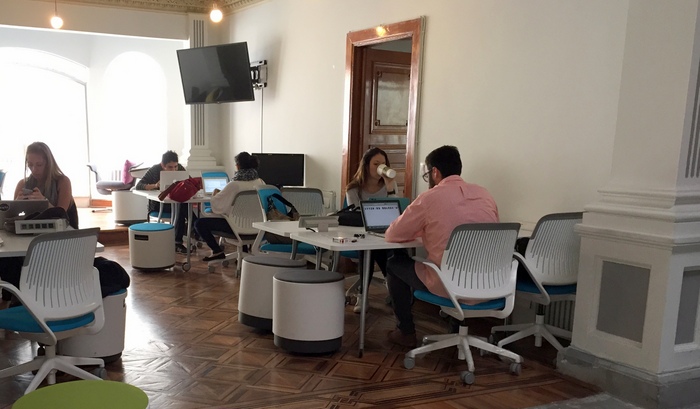 “I’d say that we’re constantly looking to Silicon Valley for cues on what’s good or bad and adjusting our criteria,” Rafael says of Mexico City. “We’ve always been hard workers so that hasn’t changed, but failure used to have a lot more stigma.”
“I’d say that we’re constantly looking to Silicon Valley for cues on what’s good or bad and adjusting our criteria,” Rafael says of Mexico City. “We’ve always been hard workers so that hasn’t changed, but failure used to have a lot more stigma.”
COMMUTE, BUT DO IT SMARTER
International entrepreneurs have all felt the pull – many spend months or years in New York or California building connections. Others expand a startup to locate a management team in a tech hub, while maintaining the majority of a company in its country of origin.
How much can an entrepreneur glean in one visit, or monthly trips? More than you might guess, Founders Network members say.
A founder based in San Francisco building relationships with five different venture capitalists as his company develops won’t be meeting with them weekly – no one has time for that.
“If you’re only going to the area once every month or two months, but you’re always going to the right place and meeting the right people, it’s almost the same thing,” Rami says. “But if you go for a month and expect something to happen – that’s a tall order.”
“Learn what you can, get the tools you need, and decide whether to move there for longer.”
What does it mean, to learn the ecosystem and find one’s place within it? Think of it as understanding the competition’s energy level, Rami says. Ultimately, you’re all competing for the same thing, even for different apps operating in completely disparate fields. In the end, every founder needs attention and money. Both are limited resources.
“Other companies are after the same thing you are and it’s good to see it,” Rami says. “You need to understand – ok fine, this is what I’m up against.”
Pedro Neira Ferrand’s fourth company in Peru, Mi Media Manzana, has looked like your typical startup story from the inside – find a brilliant team, rent an empty office, find a big table and stack people around, working shoulder to shoulder for the first four months. But a look out their window shows the beautiful Miraflores neighborhood – known for many things, but not tech.
 As Pedro closes a second round, which expanded to international investment, he required a foreign frame of reference – and had to pitch on a scale that made the 600 million consumers in his region sound like only a first step.
As Pedro closes a second round, which expanded to international investment, he required a foreign frame of reference – and had to pitch on a scale that made the 600 million consumers in his region sound like only a first step.
“If you’re going to pitch something that can take over the Latin American market, 95 percent of people in Silicon Valley would not be interested – because the opportunity is too small. In Silicon Valley people want the next thing to take over the world,” Pedro says. “In Latin America, people just want to hear an interesting opportunity.”
LOOK LARGER THAN YOUR LOCALE
“The only reason to have a startup in Finland is to figure out a business that you can grow outside of Finland. Otherwise there are much easier ways to get by,” Rami notes drily. “Ten million people go to Manhattan every day. In Finland, we have a total of 5 million people. It is a very small market.”
“If I were in San Francisco I’d be building a service that can be used all around the world, and if I’m here, I want to build a service that can be used all around the world,” Rami says.
For international investors, any location outside a tech hub is typically viewed as a weakness. Founders face a perceptions game – their regional market is too small, the team too untried, resources too limited – but there are workarounds.
“Internationally I am not Peruvian, I am Latin American,” Pedro says.
“We try to tell a story where the important thing is not the market where you are based geographically, but the market you are addressing.”
And counterintuitively, when an international startup first goes out for funding, its location in an underdeveloped tech scene can be a huge advantage – local investors appreciate your proximity, and will notice you in an uncrowded playing field. Wealthy backers won’t fit the Bay Area profile of an angel investor or venture fund – they’re more likely to be wealthy individuals with a real estate portfolio and excess liquidity.
LEVERAGE LOCAL RESOURCES
“99 percent of the people who invest in a startup here, it will be their first investment of the kind,” Pedro says of Latin America. He has to have very early conversations about how startup investment requires high tolerance for failure. “They don’t know the terms, they don’t know the risk – they don’t know the things that are taken for granted in Silicon Valley.”
Once a startup has passed that initial funding hurdle, opportunities open up – government programs and regional investors like Lifeline Ventures, in Helsinki, who are well connected across the U.S. and UK.
“Once your company really has it going, they can syndicate,” Rami says.
But where does a founder start?
Start networking early, and do it constantly, not when you need to raise money but every week, so that when you need to leverage your network, it is already there.
In regions with very concentrated wealth and no developed tech investment culture, finding early funding requires tapping into a tight local network of wealthy backers, and then working with them to expand.
“Local investors sometimes have a connection with someone outside the region. Once you have an international investor, maybe you can get another one,” Pedro says. “If you tell enough people that you are raising money, eventually someone will have a friend who is looking to invest in startups in Latin America.”
SIGNAL A CULTURE FIT WITH MORE THAN JUST METRICS
Investors have a hundred American companies they can invest in any day. How does a Finnish, Peruvian, or Czech company stand out? With metrics, but also with something more.
Finns are known for speaking little and doing much. That can be an asset – Finnish people know how to build. But as Ondrej also observed in the Czech Republic, typically they haven’t known how to market to a Bay Area audience. That’s starting to change, Rami says.
“Funders want to invest in companies that are culturally quite close, if not geographically.”
“The U.S. is all about communication – telling your story in a nutshell and being very concise,” Rami says. “Fast enough to not waste anybody’s time.”
Pedro has seen the same thing coming from Peru – “We come from a completely different culture – if you are going to make a pitch to raise money here, you have to give a lot of information and convince a lot of people. In Silicon Valley, people just don’t have time.”
How does a founder learn to selectively adopt this style, regardless of his or her background? Rami spent time watching pitching events in San Francisco, got feedback on his own style and continued to hone his presentation back in Helsinki.
“It helped me to start sharpening the message – no matter what I’m doing – either in sales or the next startup.”
This doesn’t mean dropping personal style or rejecting local norms – just adding code-switching to the repertoire, via practice and time spent with a peer group versed in the game, either in person or through action-oriented forums like the Founders Network.
“Once you know how to do it, you don’t have to do it all the time,” Rami says. And there are always surprises. His startup has been a/b testing an international sales landing page – and the version larded with text outperformed a pithier pitch. Don’t believe the Bay Area canon, chapter and verse – but learn to use what it offers.
“If you don’t know how to say what you’re doing in a few sentences, you’re going to be in trouble sooner or later,” Rami says. “Learn to do it fast and you’ve got a chance to take longer later.”
Succinct pitching may be the first must-have skill international founders pick up in Silicon Valley. Tolerance for failure is the most-cited value they wistfully wish for upon returning to home communities. Serial entrepreneurship and a fast-moving, “break to build” mindset can make it seem as though the U.S. heroizes the idea of failure, along with risk-taking and betting big.
Other nations don’t yet share the sentiment, Rami says.
“This ecosystem can’t grow until we realize that in the process of building something great, you try a lot of things. Most of which fail.”
“That’s the change that’s coming to Finland,” Rami says. ““People are realizing that you need to get constant feedback and adjust.”
“It’s ok to fail as long as you fail fast, as long as you’re honest with it, and don’t repeat those mistakes ten times in a row.”

